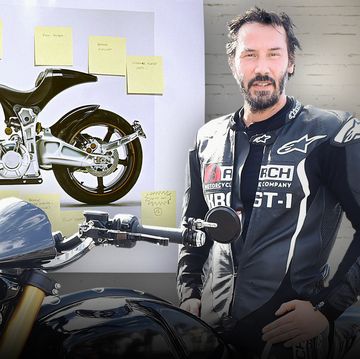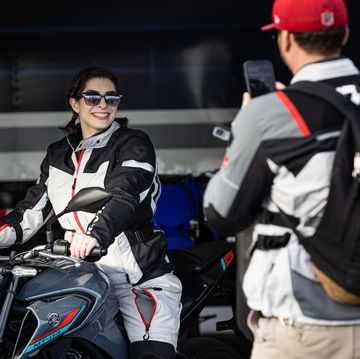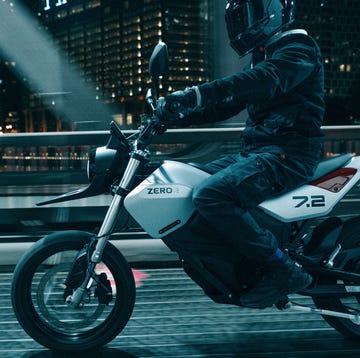(Illustration by Martin Laksman)
1. Stop–Assist Lever
To stop or slow down more aggressively, the stop–assist lever drives the wheel slightly ahead of the bike so the rider leans back more.
2. Balance
Together with an accelerometer that establishes a center of gravity, three silicon gyros, each the size of a human hair, monitor side-to-side and front-to-back balance. If a rider leans too far forward, the Ryno's software automatically moves the wheel forward under the rider to maintain stability.
3. Battery Bay
A 6-hour wall outlet charge provides enough juice for about 10 miles.
4. Tire and Wheel
A 240mm tire wraps around a wheel that contains the Ryno's innards—including two electric motors, two motor controllers, three gyros, a circuit board, five processors, the drivetrain, and two lead–acid batteries. Everything remains stable as the wheel spins on ball bearings.
5. Steering
Hoffmann compares the rider's stance on the foot pegs to that of a person riding a boogie board: Putting more weight on the left foot peg and leaning that way rolls the tire onto its side and turns the bike left.
6. Pitch Adjustment
Before riding, the rider tips the bike up or down with a button. If the rider is wearing a backpack, for instance, the adjustment would offset the weight by jutting the wheel forward, shifting the center of gravity.

Rachel Z. Arndt is the author of the essay collection Beyond Measure. Her writing has appeared in Quartz, The Believer, Fast Company, and elsewhere. She lives in Chicago.













